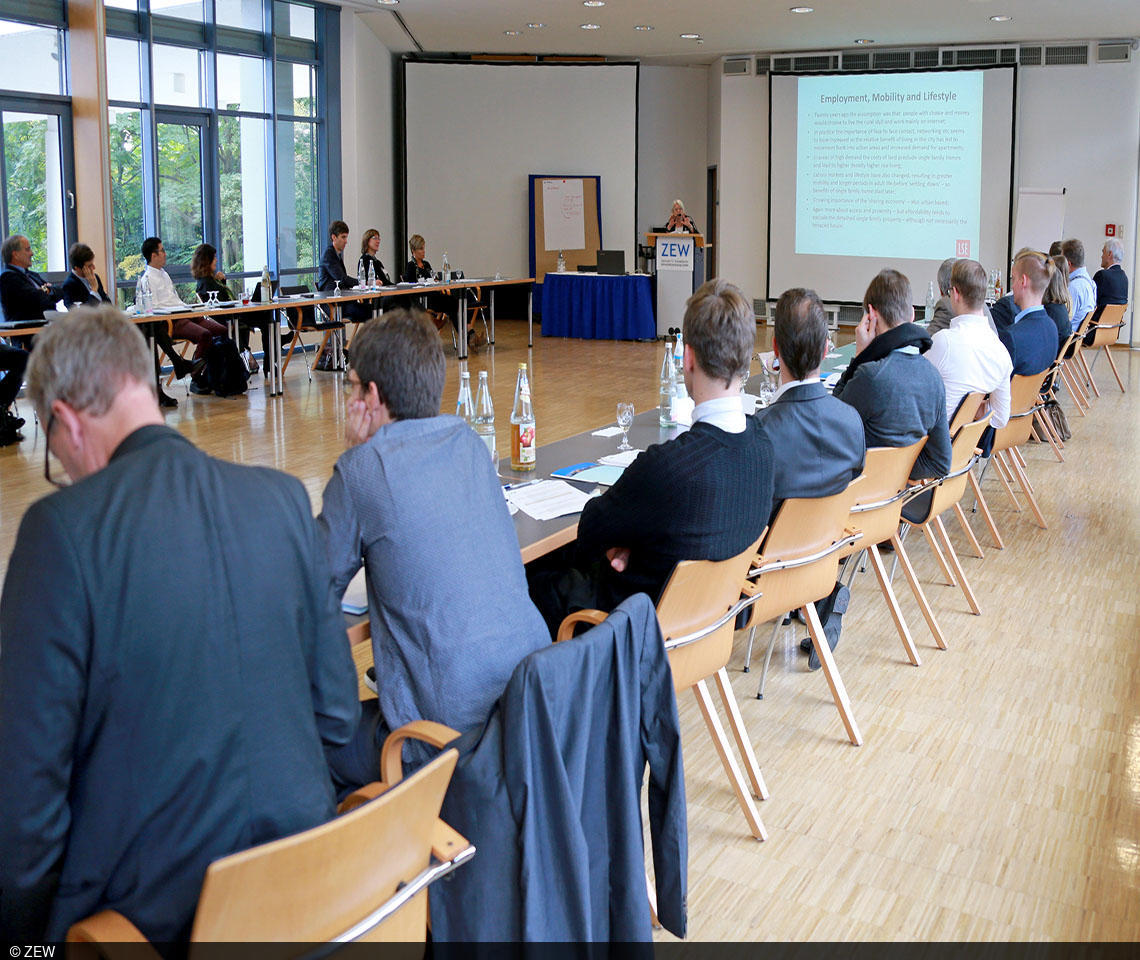First International Conference on the Future Sustainability of Single-Family Homes at ZEW
ConferencesAre single-family homes still a desirable form of housing in a digital and urban society? Why is there an increasing number of vacant single-family homes, particularly in rural areas? These are some of the many issues discussed by various international researchers at the first international Homes-uP Conference organised by the Centre for European Economic Research (ZEW) and the Leibniz Institute of Ecological Urban and Regional Development (IOER) on 13–14 October 2016.
The conference brought together researchers from various fields, who provided many different perspectives on single-family homes. The event gathered around 40 participants including architects, geographers, urban and regional planners, social scientists and economists, and featured an intense exchange of ideas. Over the course of 16 presentations, participants from seven European countries showed how single-family houses can be used sustainably, and the effect this has on living conditions. The presentations further focused on the changing needs of (potential) residents and on interactions with the built environment. The participants discussed the economic aspects of long standing single-family houses and their expected value losses in view of the progress made in the fields of building physics and technology, as well as the changed location preferences of young families.
LSE Professor Whitehead discusses single-family houses as a housing ideal
In her keynote, Christine Whitehead, Professor of Housing Economics at the London School of Economics (LSE), raised the question whether single-family houses still meet the expectations of a housing ideal. According to Whitehead, single-family homes have declined in popularity mainly because changed housing preferences of young individuals and increased maintenance costs: while home size is decreasing in Western industrialised countries, mobility of workers has become ever more important. At the same time, price increases are propotionally higher for utility costs – especially in terms of energy – relative to housing costs. This development particularly affects single-family houses, which exhibit high maintenance costs in comparison to densely populated housing in urban areas. There are also other factors, such as the willingness to commute long distances or cultural activities which play an increasingly important role in the choice of housing options. As a result, many individuals prefer the benefits of city life to working at home or having an own garden. In addition, many single-family houses are located in peripheral areas, where attractive jobs are often at a far distance.
Closing conference in November 2017
The conference makes a valuable contribution to strengthening the interdisciplinary and international character of the Homes-uP research project, which is funded by the Leibniz Association. With the aim of providing an interdisciplinary platform for the exchange of ideas on single-family homes, the conference connects different research lines focusing on the sustainability of this particular housing concept. The closing conference of the Homes-uP project is scheduled to take place at the IOER in Dresden in November 2017.
